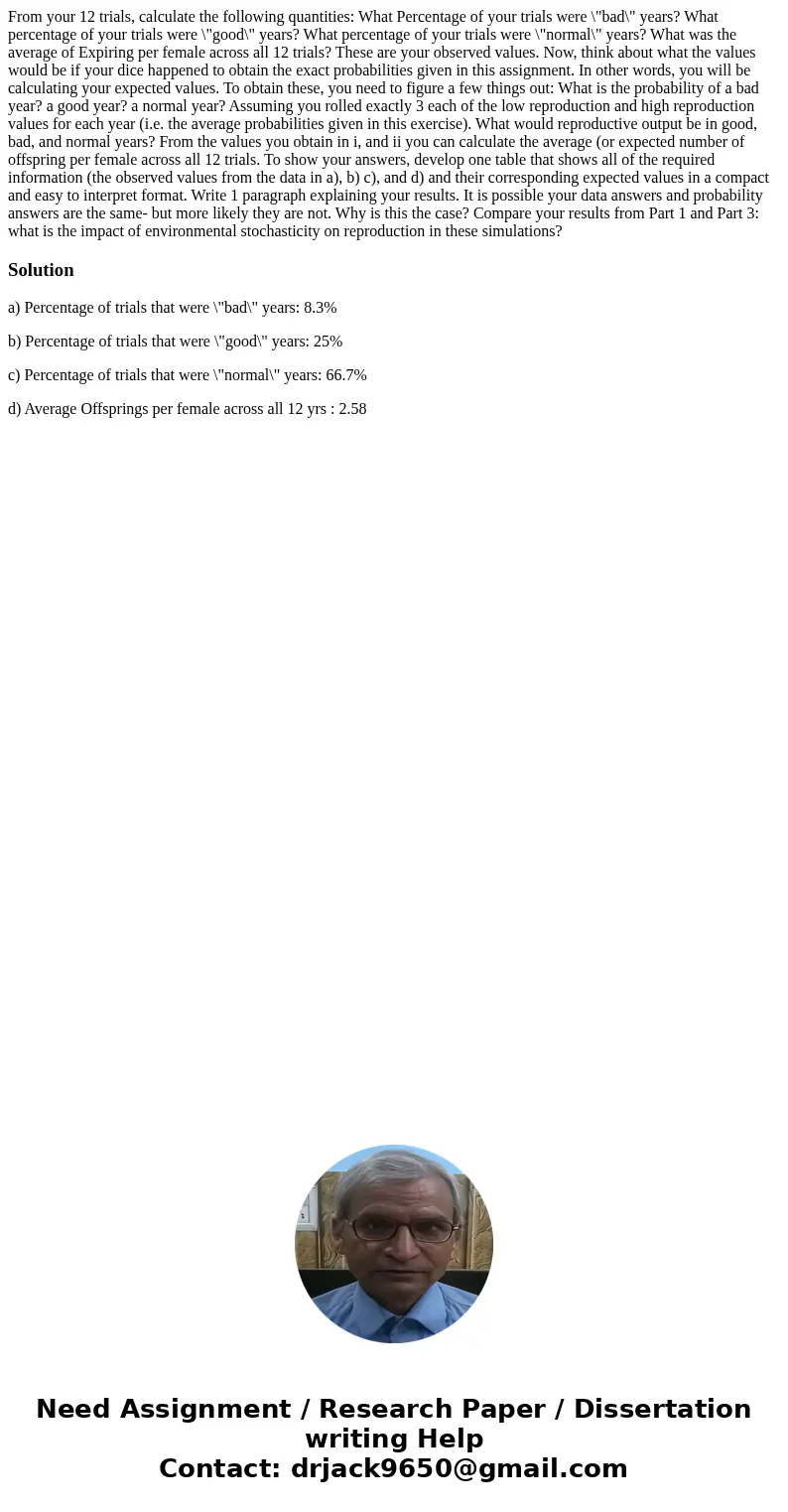From your 12 trials calculate the following quantities What
From your 12 trials, calculate the following quantities: What Percentage of your trials were \"bad\" years? What percentage of your trials were \"good\" years? What percentage of your trials were \"normal\" years? What was the average of Expiring per female across all 12 trials? These are your observed values. Now, think about what the values would be if your dice happened to obtain the exact probabilities given in this assignment. In other words, you will be calculating your expected values. To obtain these, you need to figure a few things out: What is the probability of a bad year? a good year? a normal year? Assuming you rolled exactly 3 each of the low reproduction and high reproduction values for each year (i.e. the average probabilities given in this exercise). What would reproductive output be in good, bad, and normal years? From the values you obtain in i, and ii you can calculate the average (or expected number of offspring per female across all 12 trials. To show your answers, develop one table that shows all of the required information (the observed values from the data in a), b) c), and d) and their corresponding expected values in a compact and easy to interpret format. Write 1 paragraph explaining your results. It is possible your data answers and probability answers are the same- but more likely they are not. Why is this the case? Compare your results from Part 1 and Part 3: what is the impact of environmental stochasticity on reproduction in these simulations?
Solution
a) Percentage of trials that were \"bad\" years: 8.3%
b) Percentage of trials that were \"good\" years: 25%
c) Percentage of trials that were \"normal\" years: 66.7%
d) Average Offsprings per female across all 12 yrs : 2.58

 Homework Sourse
Homework Sourse